Data Science and AI Infographics
We break down complex topics in data science, data analytics, machine learning, and AI into informative, easy-to-digest infographics.Navigate your way through the sea of weighty data and AI content with the help of our 365 Data Science infographics. Simplify and enhance your learning experience through memorable visual representations—available to download for free.
Explore a treasure trove of resources:
- Data science infographics for field navigation
- AI infographics for simplifying complex topics
- ChatGPT infographics with prompts
- Data analytics infographics for role guidance
These visuals are designed to make complex information easily understandable, enhancing your learning experience.

What Is the Central Limit Theorem? Infographic
The Central Limit Theorem (CLT) is a fundamental concept in statistics. But what exactly is the Central Limit Theorem? The Central Limit Theorem definition states that the distribution of sample means approximates a normal distribution as the sample size increases, regardless of the underlying population distribution. Understanding what the Central Limit Theorem says is crucial for statistical inference and probability theory. If you want to develop a deeper understanding of this concept, this Central Limit Theorem infographic provides a comprehensive overview of CLT in statistics, including its definition and why it matters. This resource also explains when to use the Central Limit Theorem and demonstrates how it works in real-world scenarios. It also addresses important considerations about Central Limit Theorem sample size requirements and helps clarify common misconceptions about normal distributions. Download our free Central Limit Theorem infographic to get an easy-to-reference guide that breaks down this essential statistical concept into clear, understandable components.
Learn More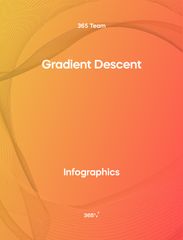
Gradient Descent Infographic
Our Gradient Descent Infographic provides an in-depth overview of an essential method widely applied in machine learning. What is Gradient Descent? Gradient Descent is an optimization algorithm that finds the local minimum of a function. It’s used in machine learning for cost function minimization. Gradient descent is essential to various machine learning models used by data scientists and machine and deep learning engineers. The infographic offers a well-rounded definition of gradient descent, machine learning applications, and the method's intuition. It further outlines the step-by-step process of the gradient descent algorithm—starting with initial coefficient values and repeating the process until converging on a minimum. The infographic also highlights the gradient descent assumptions and compares the pros and cons of stochastic gradient descent—a variant that updates the coefficients more frequently.
Learn More
World of Open-Source Generative AI Infographic
The rise of artificial intelligence and its generative capabilities have transformed how we develop, deploy, and interact with AI solutions. Our World of Open-source Generative AI infographic provides a comprehensive overview of critical open-source AI tools and resources shaping the future of AI. From foundational models to orchestration tools, this visually appealing infographic details the open-source generative AI landscape—highlighting the advantages and considerations for each category. In this free downloadable AI infographic, you’ll explore the following elements critical to open-source generative AI. Foundation Models: Understand the role of large, pre-trained models like LLaMA and GPT-2 and how they’re used as bases for further adaptation. Datasets: Learn about open-source datasets crucial for training and validating AI models. Vector Databases: Discover how these databases facilitate quick and scalable similarity searches. Orchestration Tools: See how tools streamline the construction of LLM-powered applications. Evaluation Tools: Assess AI model performance and reliability with cost-effective solutions like DeepEval, deepchecks, arize, and Langdock. Community and Ethics: Engage with the vibrant AI community and understand the ethical frameworks guiding open-source AI development.
Learn More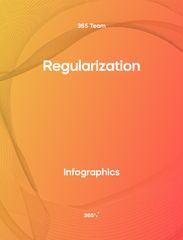
Regularization Infographic
Our regularization infographic provides a comprehensive overview of an essential machine-learning technique. Regularization is a technique that helps prevent models from overfitting by introducing constraints into the loss function. For instance, in logistic regression, regularization techniques can be used to optimize the model's performance. The infographic provides a clear, concise definition of regularization, highlighting its role in balancing overfitting and underfitting. It illustrates how adding noise and improving generalization enhance model performance on new data. It also gives in-depth look at various regularization methods, including L1 regularization (Lasso regularization) and L2 regularization (Ridge regularization). It explains their formulas and how they influence coefficient adjustment in model training. Additionally, the infographic explores Elastic Net, a method blending Ridge and Lasso regularization, along with a 2-stage regularization process.
Learn More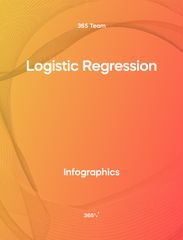
Logistic Regression Infographic
This logistic regression infographic provides a clear and comprehensive overview of a standard statistical method used to predict binary outcomes. Unlike simple linear regression, logistic regression excels at deciphering the connection between multiple independent variables and one dependent variable. It simplifies the comprehension of intricate data relationships, making it a perfect gateway to machine learning. Logistic regression handles non-linear relationships effectively, delivering robust results without intricate hyperparameter adjustments.
Learn More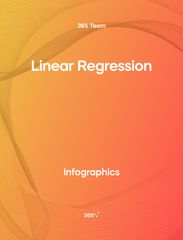
Linear Regression Infographic
This Linear Regression infographic demystifies the principles behind a standard statistical model used in machine learning—showing how to predict and understand linear variable relationships. It depicts its mathematical formula, training process, and practical applications with examples. Are you struggling to recall the linear regression assumptions? Unsure when to apply linear regression in machine learning? Download our infographic for an instant cheat sheet.
Learn More
How to Prompt ChatGPT Effectively
ChatGPT is a powerhouse AI algorithm transforming how we lead, work, and brainstorm. By typing our desired output as a prompt into ChatGPT, the generative AI model returns an actionable, informed response that meets your needs. Accelerate your productivity by learning how to interact with this indispensable tool. Our How to Prompt ChatGPT Effectively infographic is a structured resource that guides you in creating effective prompts for ChatGPT. Construct practical prompts that generate insightful responses and inspire creative solutions. To boost your productivity and stay current, you must take advantage of the best tools at your disposal. So, start engaging with ChatGPT like a pro and future-proof your skills.
Learn More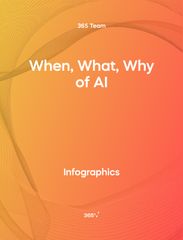
When, What, Why of AI
Artificial intelligence is becoming a household discussion, yet it’s still widely misunderstood. Our When, What, Why of AI infographic aims to demystify the concept by answering the most popular questions: What is artificial intelligence? How does it work? Who invented AI? Who uses AI models? We’ve divided the AI infographic into two separate categories in terms of methodology: rule-based and statistical. Learn what АI concepts like deep learning, NLP, and computer vision mean and when they were first popularized. You’ll also discover what models they’re based on and the main AI applications. Finally, we introduce AI pioneers whose contributions have shaped—and continue to shape—the tech-advancement landscape.
Learn More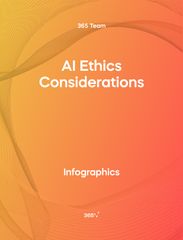
AI Ethics Consideration
As deep learning and artificial intelligence rapidly evolve, it’s essential to consider how their development affects the broader community. In other words, we shouldn’t ignore the ethics of AI and its implications. With this informative AI Ethics Considerations infographic, we look at the ethics in artificial intelligence to answer the question, “Is AI actually ethical?” By examining scenarios like copyrighted materials and biased data through the AI lens, we present potential ethical issues for companies and end users. This resource aims to create a broader conversation about the development of a more responsible and ethical use of AI models. Artificial intelligence will continue to shape our future, and we should harness the transformative power that automatization brings us. We also present a list of potential remedies to facilitate a more considerate approach that caters to the broader human experience and creates more ethical AI models.
Learn More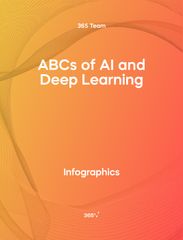
ABCs of AI and Deep Learning
Artificial intelligence is a trending topic that intrigues and perplexes. But what is it, and how does it work? Our comprehensive ABCs of AI and Deep Learning Infographic introduces you to the basics of artificial intelligence through its deep learning foundations. Arranged alphabetically, this glossary provides an overview of essential terms and phrases that define deep learning and AI concepts. Each letter of the alphabet represents methodologies, such as convolutional neural networks, natural language processing, and Xavier initialization. Use the ABCs of AI and Deep Learning Infographic to foster your curiosity and navigate the complexities of these transformative technologies.
Learn More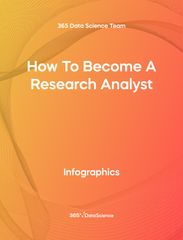
How to Become a Research Analyst
The research analyst is an entry-level position that is responsible for helping a company coordinate its research related activities and investigate special requests. They serve as task leads across the departments within a company, coordinating between stakeholders, project teams, master data teams and team leaders. The dynamic and responsible nature of the job gives the necessary experience for individuals to grow into future analytics managers and data scientists. Therefore, in this free pdf infographic on How to Become a Research Analyst, we are going to describe the research analyst profile, job responsibilities, average salary numbers, required skills and more, so you can start on the right foot.
Learn More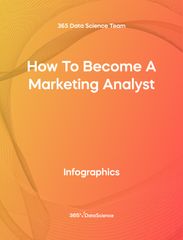
How to Become a Marketing Analyst
The overall goal of a marketing analyst is to discover and present marketing insights by working with the company’s pool of data to increase marketing and sales performance Therefore, the marketing analyst job is a highly dynamic role that requires a combination of strong communication, analytical and marketing skills. If you want to go into greater detail on what is a marketing analyst, what does a marketing analyst do, what are the required marketing analyst skills and what is the marketing analyst career path then check out the free pdf infographic on How to Become a Marketing Analyst.
Learn More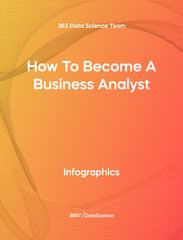
How to Become a Business Analyst
The business analyst is one of the most dynamic roles in a company, as they are tasked with the responsibility to bridge the organization’s information technology capabilities with its business goals. Combined with a high-paying salary and room for career growth , the position is a highly desired career by many business professionals. Therefore, we have created this free pdf infographic that is going to cover what does a business analyst do, salary information, business analyst skills requirements and career path to show you what to expect and decide for yourself if this is the right career for you.
Learn More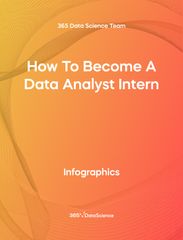
How to Become a Data Analyst Intern
In the highly competitive data science job market, data analyst internships are a perfect way for you to gain hands-on experience working with data to answer critical business questions, learn important soft skills and expand your networking circle for career growth. The 365 Data Science Data Analyst Intern infographic will show you how to get a data analyst internship by going over the position responsibilities, the required technical skills and educational background for the data analyst position.
Learn More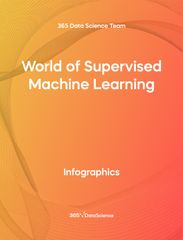
World of Supervised Machine Learning
Тhe introduction of Artificial Intelligence and its subset Machine Learning have introduced a whole new paradigm of possibilities in the realm of data related activities. In this visually beautiful World of Supervised Machine Learning infographic, we are giving essential information on all the different types of supervised machine learning, starting from the least complex - Linear Regression, to the most complex- XGBoost. Some of the things you will learn in this free pdf infographic are the advantages and disadvantages of each type, their algorithm speed, preprocessing, starter datasets and areas of application.
Learn More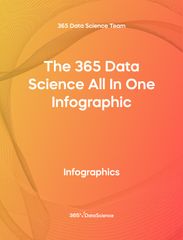
The 365 Data Science All In One Infographic
Data science is a relatively new field that combines various disciplines like mathematics, statistics, machine learning, data analytics and programming, which is why coming to a universal definition and understanding of this ever growing field is quite the challenge. Despite that, the 365 Data Science Team has united their efforts to create a comprehensive overview of the data science field. This free 365 Data Science pdf infographic covers the types of data, the associated data techniques, the data related professions, places of application and more, giving you a holistic picture of data science.
Learn More